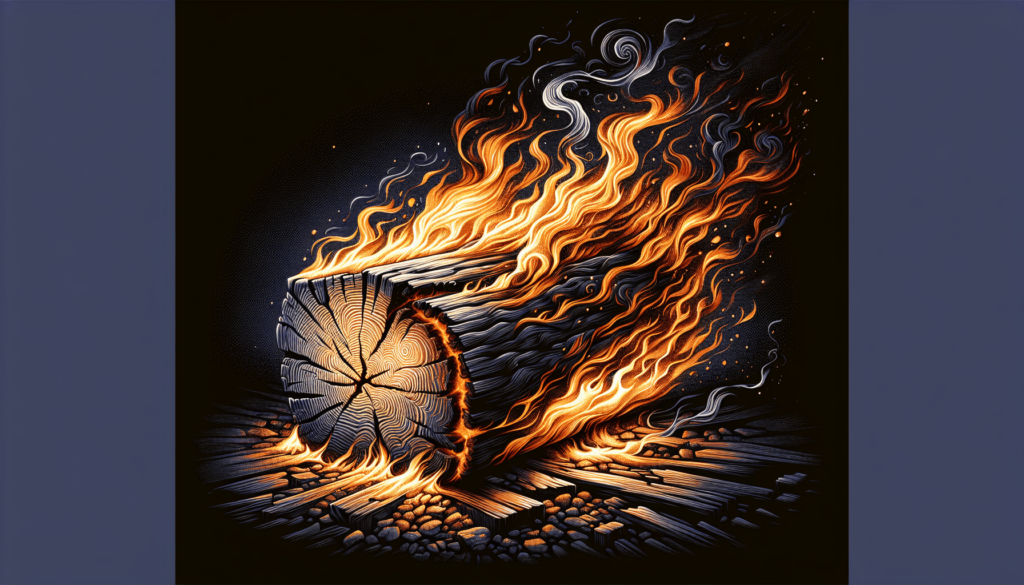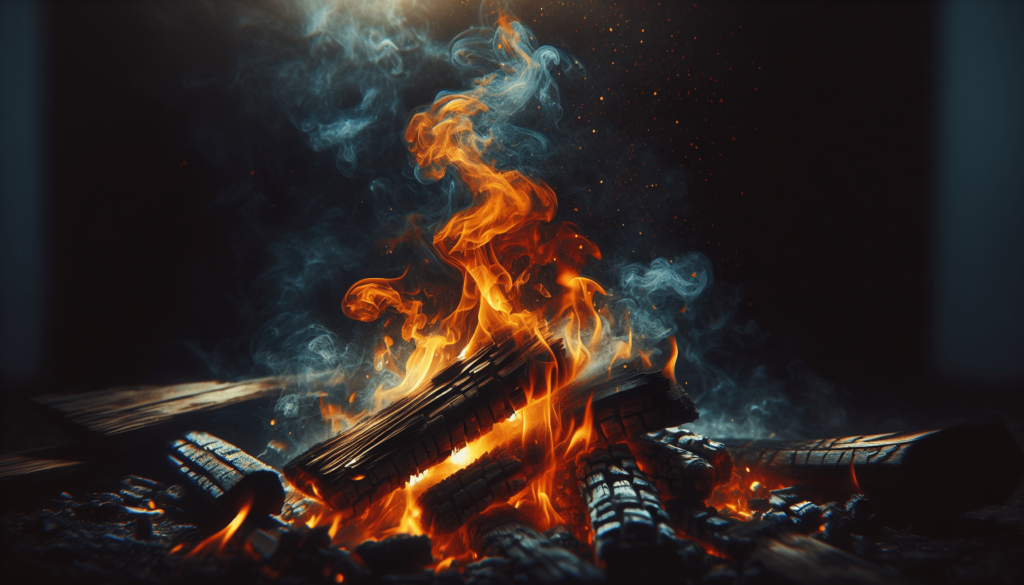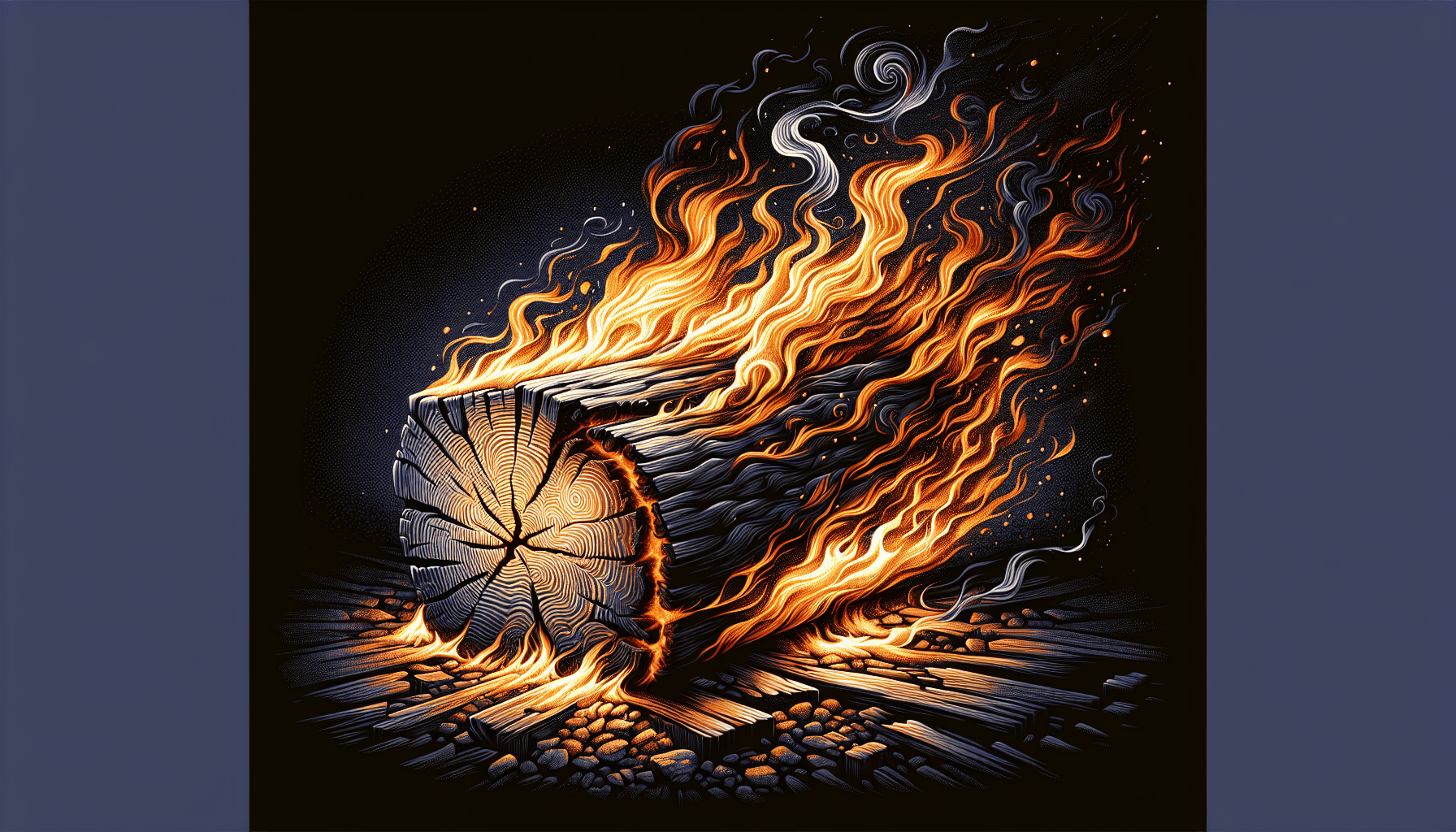Burning wood is a chemical process known as combustion, where wood reacts with oxygen in the air, producing heat, light, carbon dioxide, and water vapor. When I think about sitting by a cozy campfire, I’m reminded that this seemingly simple act is actually a complex transformation. It’s fascinating to consider how the energy stored within the wood is released, providing warmth and light. This process doesn’t just burn wood; it transforms it on a molecular level, breaking down its constituents and rearranging them into entirely new substances. Do you ever wonder what really happens when you toss a log onto a roaring fire? I mean, it seems so straightforward, right? Just a piece of wood, some flame, and voilà, instant heat and light. But, oh no, there’s a whole tangled web of chemistry and physics at play, and it’s more complex than Aunt Marge’s infamous fruitcake recipe. So, let’s crack this nut together and answer the burning question (pun very much intended): “What type of process is burning wood?”

The Basics: What Does Burning Wood Involve?
When we’re talking about burning wood, or combustion if you want to get all fancy, we’re diving into some deep chemical and physical changes. I mean, we’ve got everything from molecules breaking apart like a teenage heart after a prom-night break-up to new substances forming quicker than rumors at a high school reunion.
Chemical vs. Physical Changes
In school, you might remember learning about chemical and physical changes. Burning wood is a prime example of a chemical change, where the substances involved change their chemical makeup entirely.
Comparison Table: Chemical vs. Physical Changes
| Aspect | Chemical Change | Physical Change |
|---|---|---|
| What it involves | Formation of new substances | Change in physical form or state |
| Reversibility | Usually not reversible | Generally reversible |
| Examples | Burning wood, rusting iron, baking a cake | Melting ice, shredding paper, boiling water |
| Energy exchange | Exothermic or endothermic (heat is involved) | May or may not involve energy change |
See, burning wood isn’t like melting ice or tearing a piece of paper; it’s a full-on transformation. The wood becomes entirely new compounds.
The Science Behind Burning Wood
Pop your science hats on because we’re diving into some juicy details! At the heart of this are three essential components: fuel (the wood), oxygen (from the air), and an ignition source (a match, lighter, or magnifying glass if you’re feeling particularly MacGyver-esque).
The Combustion Triangle
Most of us can barely handle our email inbox, let alone juggle three things simultaneously. But fire, bless its fiery heart, deftly balances fuel, oxygen, and heat. It’s like a Cirque du Soleil act happening right on your fireplace grate.
- Fuel (Wood): The wood is the star of the show here. It contains carbon, hydrogen, and oxygen atoms all bound up together in sweet chemical harmony.
- Oxygen: This is the air we breathe, more or less. Oxygen is the unsung hero of many fireside chats.
- Heat: The ignition source, sparking the transformation. Whether it’s a flint or a match, it’s what gets the party started.
Pyrolysis: When Wood Meets Heat
The real magic starts with pyrolysis, a fancy term for when wood gets heated to the point that it starts breaking down. This stage doesn’t need oxygen, which is why it is a tad mysterious.
- Stage One: The wood heats up, and any water content inside evaporates. You may find it comforting to know that even wood has to deal with water weight issues.
- Stage Two: As temperatures rise, the chemical bonds in the wood start breaking down, releasing a cocktail of gases, including water vapor, methane, and various other organic vapors. Within minutes, the wood transforms into charcoal—think of it as a crunchy, darker version of itself.
Ignition: The Moment of Magic
In comes the heat, setting off a chain reaction. If you’ve ever had a firework fizzle out right before showtime, you’ll appreciate the fragility of this next stage. The gases released from pyrolysis mix with oxygen and ignite, producing flames. Ah, sweet ignition! It’s the dramatic climax of our wooden soap opera.
Combustion: The Main Event
The gases ignite first, followed by the solid wood. This process can be broken down further into two main types:
- Flaming Combustion: When gases from pyrolysis ignite, leading to visible flames.
- Smoldering Combustion: The slower, low-temperature burn of the solid residues like charcoal.
Both types of combustion lead to the production of ash, heat, light, and off-gas products like carbon dioxide and carbon monoxide.
The Byproducts: What’s Left Behind?
Burning wood is not like throwing out the garbage; what’s left over tells a story. The residues, the ashes, and the unburned carbon are all clues to the chemical symphony that’s been playing out.
Ashes to Ashes: The Solid Residue
After the flames have had their way with the wood, what’s left are ashes comprised mainly of non-combustible minerals. This includes calcium, potassium, and, depending on your wood, a fascinating mix of other elements.
Smoke Signals: The Gaseous Byproducts
Smoke is a mix of fine particles and droplets, along with gases like:
- Carbon Dioxide (CO2): The most significant output, contributing to our ever-warm globe.
- Carbon Monoxide (CO): A sneaky, odorless gas that’s lethal in high concentrations.
- Water Vapor (H2O): Yes, even fires have a hydration issue.
Energy Release: The Warm Fuzzies
The real treat of burning wood is the exothermic reaction, the heat released. Whether you’re warming your hands by the fire or roasting marshmallows, this released energy is why we love fire so much.
Different Woods, Different Burns
Now, because this conversation wouldn’t be complete without a bit of variety, let’s consider how different types of wood burn differently. Much like coffee beans, not all woods are created equal when it comes to burning.
Hardwoods vs. Softwoods
Ever heard of hardwoods and softwoods? It’s as if Mother Nature decided even trees needed to be classified like library books.
- Hardwoods: Think oak, maple, and hickory. These woods are dense and tend to burn longer and hotter. They’re like the slow-cooking roasts of the firewood world.
- Softwoods: Pine, spruce, and fir, to name a few, are less dense. They catch fire quickly but also burn out faster, making them the equivalent of firewood fast food.
Comparison Table: Hardwoods vs. Softwoods
| Type of Wood | Examples | Burn Duration | Heat Produced | Ideal For |
|---|---|---|---|---|
| Hardwoods | Oak, Maple, Hickory | Long | High | Long-term heating |
| Softwoods | Pine, Spruce, Fir | Short | Moderate | Kindling or quick fires |
The Moisture Content Factor
There’s also the little question of how much water content there is in the wood. Freshly cut wood, or “green wood,” contains a lot of moisture, which makes it sputter like crazy and give off less heat. Seasoned wood, on the other hand, has been allowed to dry out, thus burns more efficiently.

Historical Perspective: Burning Wood Through the Ages
Let’s time-travel a bit and see how our ancestors viewed burning wood. Fire has been a cornerstone of human civilization, and the act of burning wood isn’t just about staying warm—it’s about survival, cooking, social gatherings, and even warding off predators.
Early Humans and Fire
Early humans discovered fire around 1.5 million years ago, probably by accident. I can just imagine some guy named Ugg rubbing sticks together, voicing his version of “Hey, watch this!” Who knew that moment would revolutionize life as we know it?
Fire in Agriculture and Industry
As society advanced, the use of fire became more sophisticated. Wood-burning played a critical role in agriculture, shaping tools, and even in early industrial operations like blacksmithing and pottery.
Modern Uses of Wood Burning
Today, while we have fancy heating systems and electric stoves, burning wood is still quite relevant. It’s an eco-friendly heating option and remains integral to camping and outdoor gatherings. Plus, who can resist the allure of a crackling fireplace on a cold winter night?
The Environmental Impact
Alright, let’s get a bit serious. Any process that involves combustion is inevitably going to have environmental implications. When you burn wood, you release various pollutants and carbon dioxide into the atmosphere, contributing to air quality issues and climate change.
The Carbon Footprint of Burning Wood
Wood is often termed as “carbon-neutral” because trees absorb CO2 as they grow, which balances out the CO2 emitted when the wood is burned. But this is a bit of a half-truth. Other factors like transportation, the type of wood burned, and how efficiently it burns can tilt the scales.
Air Quality and Health Concerns
Burning wood, especially in poorly ventilated areas, can lead to indoor air pollution, exacerbating respiratory issues like asthma. It’s a trade-off—comforting warmth for potential health risks.
Sustainable Wood Burning Practices
If you’re keen to stay eco-friendly while enjoying your wood-burning fireplace, consider a few tips:
- Use seasoned wood: It burns more efficiently.
- Install a modern wood stove or fireplace: These are more efficient and emit fewer pollutants.
- Plant new trees: Offset your carbon footprint by contributing to reforestation projects.
Conclusion: Burning Questions Addressed
So, what type of process is burning wood? It’s a complex but fascinating blend of chemical changes, energy transformations, and historical significance. The next time you light a fire, you’ll do so with a newfound appreciation for the chemical symphony playing out before you.
Whether you’re toasting marshmallows, huddling for warmth, or just staring mesmerized at the flames, you’ll now understand the intricate science behind those dancing flames. And who knows, perhaps your fireside chats will now include a nugget or two about pyrolysis and combustion.
So, here’s to understanding the science behind the sizzle. Stay warm, stay informed, and remember: the process of burning wood is as intricate and captivating as life itself.
Cheers to your next roaring fire!

